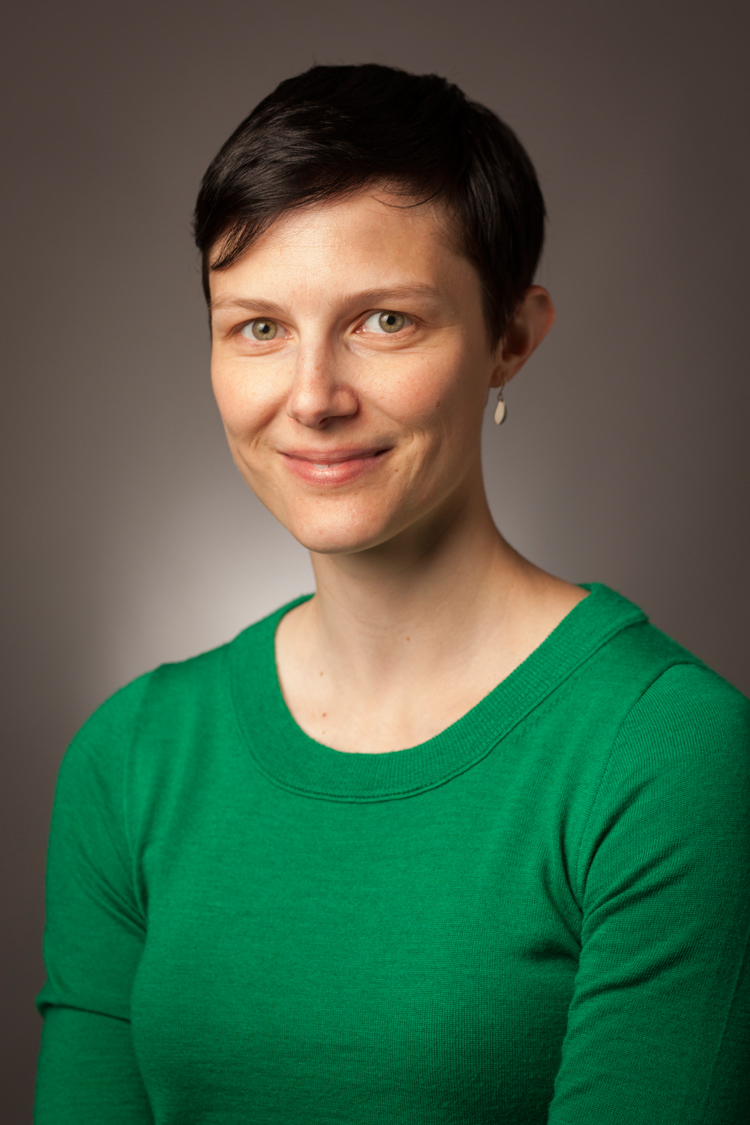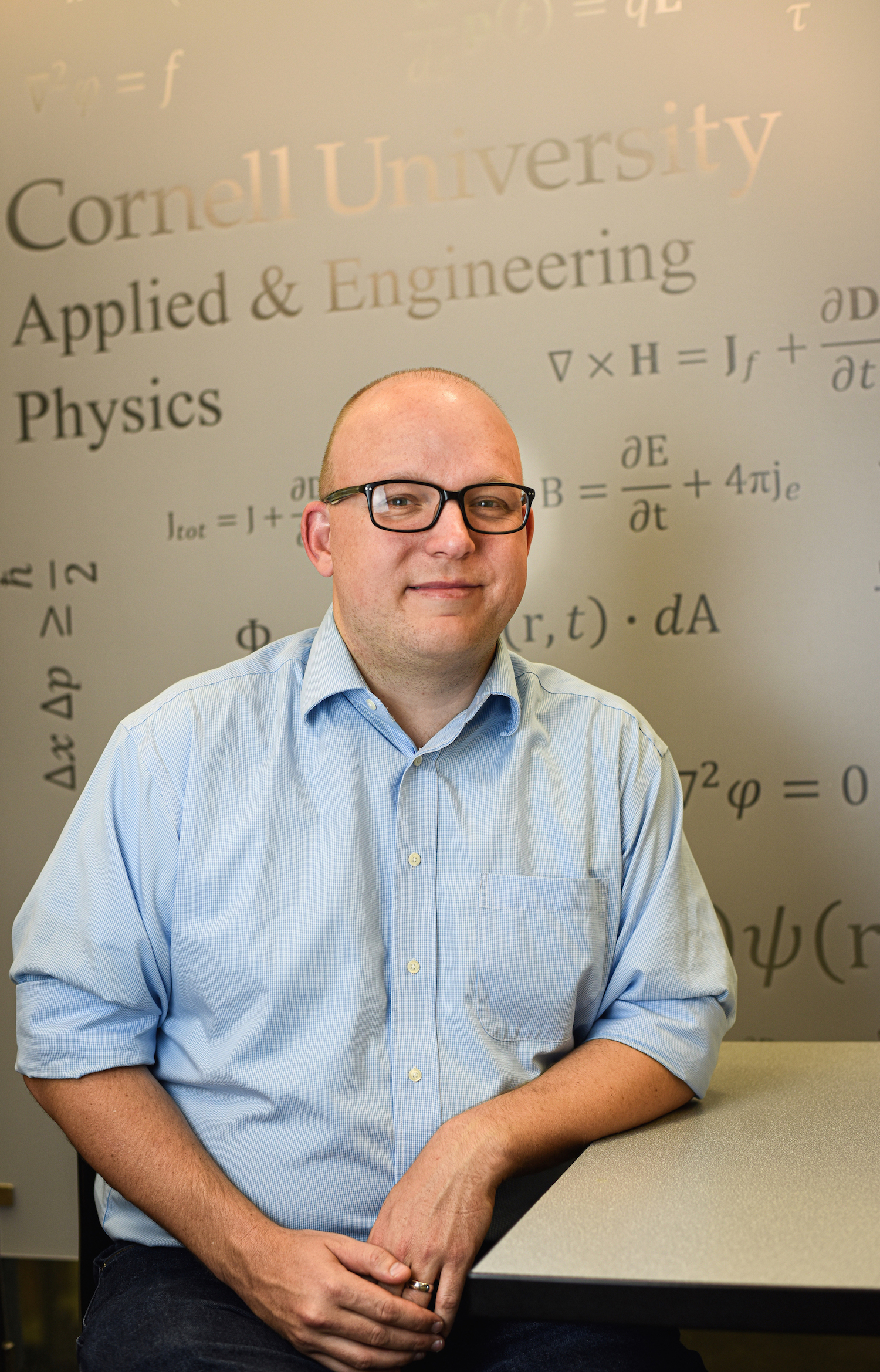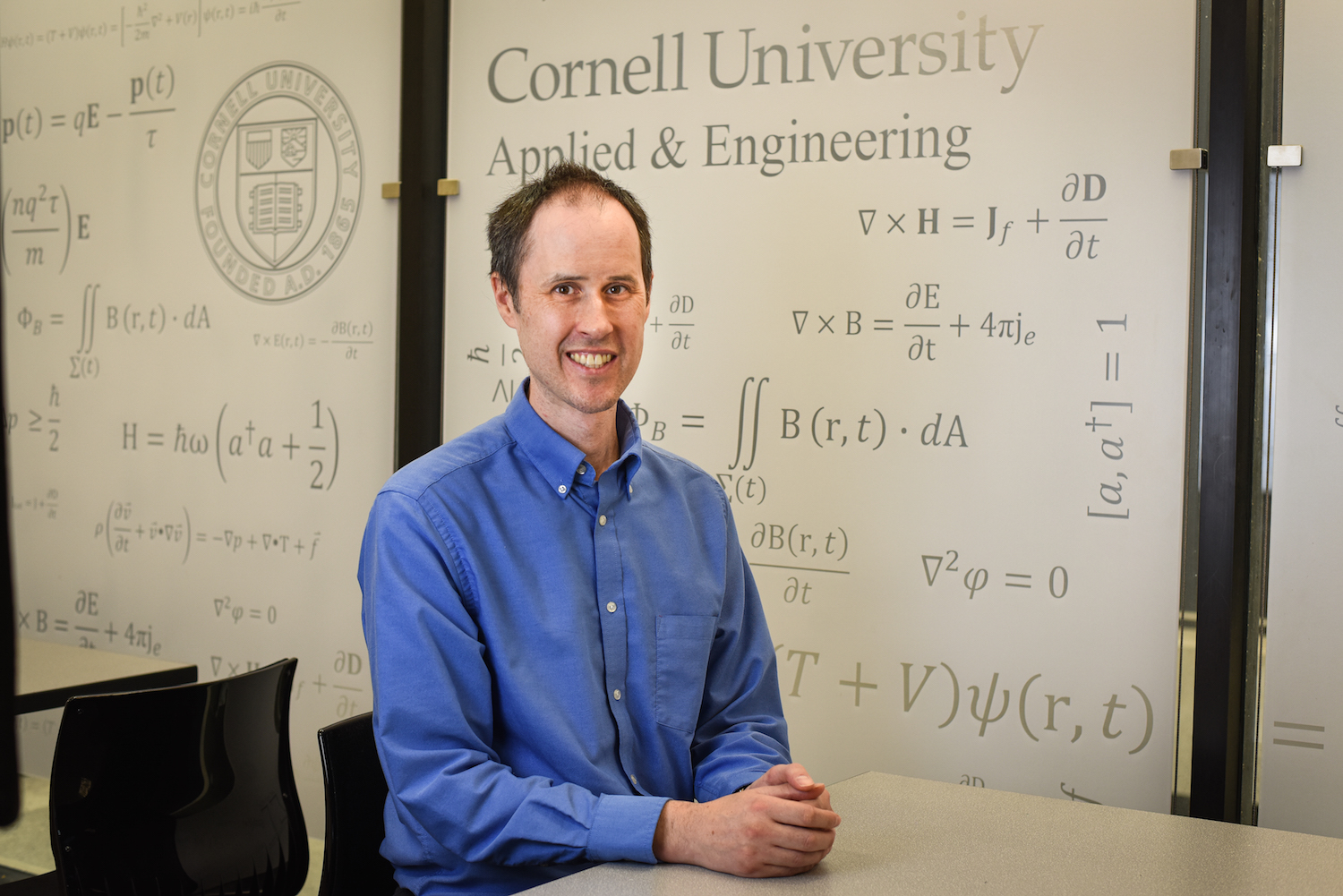
Quantum engineering
By Jackie Swift
You may have noticed quantum computing cropping up in the news a lot lately. Last October Google announced they’d pulled off quantum supremacy when their prototype quantum computer solved a problem they claimed would take a classical supercomputer 10,000 years to solve. Meanwhile, the National Science Foundation kicked off its Quantum Leap Challenges Institutes program which will fund large-scale projects in quantum science, and the U.S. Department of Energy announced $625 million in funding for centers to advance quantum information science.
It’s easy to see why there’s so much interest. Where classical computers process information using bits that encode either a zero or a one, quantum computers—made up of quantum bits, or qubits—harness quantum-mechanical phenomena. A qubit encodes a quantum state that’s either a zero, a one, or in superposition where it is simultaneously zero and one at the same time. Quantum computers may also make use of quantum entanglement, where pairs of particles are linked so that, even when separated by great distance, the reaction of one particle to actions upon it results in the other also responding instantaneously. Being able to process, store, and move around information via quantum effects gives quantum computing power far beyond today’s classical computing.
The problem of simulating quantum systems
The idea of a quantum computer was first put forth by physicist Richard Feynman in 1981 when he suggested that researchers develop a computer that operates in a fundamentally quantum mechanical way. He had one specific use for the computer in mind: the simulation of quantum systems, which could revolutionize the optimization of all kinds of materials from pharmaceutical drugs to rechargeable batteries—as well as predict new materials not yet invented. Feynman said it would be natural to use a quantum computer for these types of simulations because the internal state of the computer would be exponentially large, matching the exponentially large state of a system to be simulated.

The problem of simulating quantum mechanics is one Nicole Benedek, assistant professor of materials science and engineering, comes up against often. Benedek searches for new materials using theories based on quantum mechanics to understand and predict the materials’ properties. “We know the fundamental equations for quantum mechanics,” she says. “But we need to make a number of approximations to solve the equations for real materials.”
One of the most important approximations Benedek has to make deals with how the electrons in a material interact with each other. The fundamental equation for understanding this, Schrödinger’s equation, can’t be solved exactly for more than two interacting particles, given current computing power. The inability to solve the equation is known as the many-electron problem. “When we have more than two electrons, we have to start making approximations,” Benedek says.
She points out that although, for the most part, the approximations work fairly well, they are not exact, and they are a bad fit altogether for some strongly correlated materials. “There are other techniques where you don’t have to make the approximations,” she explains. “But they are extremely computationally expensive. It takes a very long time to do the simulations, many months, and it’s always in the back of your mind that this is not the precise thing I actually need to be simulating. One hope is that quantum computers will let us get around the many-electron problem, so we don’t have to make these approximations.”
Engineering challenges to building qubits
A lot of work has gone into envisioning the architecture of a quantum computer since Feynman first brought up the idea, but the technology is still in its infancy. Some major engineering challenges will have to be overcome. Chief among them is figuring out how to preserve quantum states, which are extremely fragile. During a quantum calculation, even the smallest disturbance, say a vibration or a stray photon, can cause decoherence, or the collapse of the computation.
The problem of decoherence looms over researchers as they pursue many different potential platforms for qubits, including trapped ions, quantum dots, photonics, and superconducting circuits, to name a few. “At this point we’re trying to figure out the best way to build a quantum computer that is useful,” says Peter McMahon, assistant professor of applied and engineering physics, who researches the design and application of quantum computers.
The McMahon Lab focuses specifically on two platforms they think are interesting: photonics and superconducting circuits. “We have a lot of ideas we want to try out in both these technologies,” McMahon says. “We also hope that, by working with both, we will have opportunities for cross-pollination of ideas between the two platforms.”

Photonics and superconducting systems each have drawbacks. Photons, for instance, don’t like to talk to each other. “That’s a very big problem for quantum computation because you need different qubits in the computer to interact,” McMahon says. “But while photons don’t interact in a way that makes the light sabers in Star Wars possible, it is possible to get them to interfere with each other. By designing the creation, interference, and detection of photons appropriately, we can build a quantum computer based on light.”
One of the biggest potential benefits of photonic qubits is that they can function at room temperature, while many other candidate platforms have to be kept cool. Superconducting circuits, for instance, while looking a lot like classical electronic circuits, have to be kept close to absolute zero to ensure they keep their quantum effects. “You have to have a specialized refrigerator to keep them that cold,” McMahon says. “Besides the cost, the major near-term difficulty is that it limits the size of the system you can work with. If you bring in thousands of wires from room temperature to control thousands of qubits, the refrigerator stops being able to cool the circuit down enough.”
Using entanglement for a quantum network
In addition to creating local quantum processors, researchers also want to connect them in a quantum network. Gregory Fuchs, associate professor in applied and engineering physics, is working on one way to do that using point defects in diamonds known as nitrogen-vacancy (NV) centers. Point defects are small, local rearrangements in the lattice of atoms that make up a diamond. In the case of NV centers, a nitrogen atom replaces a carbon atom while the neighboring carbon site is vacant.
“The focus of our group has been on making a hybrid system composed of either one NV center, or an ensemble of them, and a diamond mechanical resonating device that oscillates with gigahertz frequencies,” Fuchs says. “Using the oscillator, we can control the spin states of the particles; we can engineer them so they’re less sensitive to the fluctuations of their environment. Then they stay coherent longer.”
The spin of NV centers also keep coherence even at room temperature, which might make it seem like NV centers are good candidates for building quantum computers. Not obviously so, says Fuchs. “One of the challenges that we have not overcome is connecting and scaling NV centers to make quantum computers,” he explains. “It’s not obvious that there will be a good solution to that problem. It’s a really hard thing to do. However, you can base quantum networks on NV centers.”
Creating a quantum network requires coupling a physical matter–based quantum register to another one somewhere else. “We need a way of entangling them through light,” Fuchs says. “The idea is to take a long-lived, solid-state qubit that’s stationary and entangle it with a photon. If we can do that, then we can build up a network because we can entangle photons with each other, then swap the entanglement from the photons to the matter-based qubits.”

While the sensitivity of quantum states has made building quantum information processing technologies a challenge for physicists, that sensitivity also serves as an opportunity for a promising application. Fuchs and other researchers are using the spin of NV centers as a sensor, capable of detecting infinitesimal changes in surrounding magnetic and electric fields. These quantum sensors have a wide range of applications, from mapping electrical impulses in the brain to revealing objects hidden underground where tiny fluctuations in the earth’s magnetic field are identified, Fuchs explains. And unlike other sensors that require extremely low temperatures, the systems he researches can operate at room temperature. “The range of opportunities for applying NV centers as sensors is remarkable,” he says. “We haven’t gotten close to thinking of everything that a sensor like this can do.” One possible application the Fuchs Group is pursuing—in collaboration with physics professor Katja Nowack—is to build a single spin quantum microscope to study nanoscale magnetism.
In the end, the question still remains, what will we use quantum computers for? “A quantum computer feels like it should be much more powerful than a classical computer because it can do what classical computers can’t: simulate quantum-mechanical systems,” McMahon says. “So what else can it do?” McMahon’s lab is actively working on finding applications of quantum computers to machine learning and optimization, in addition to exploring how quantum computers might tackle quantum-simulation problems in the near term.
Meanwhile, Benedek continues to pursue new materials, seeking to understand at a fundamental level how the materials’ properties arise from the way their atoms are put together. In particular, she is investigating the mechanisms of thermal expansion and thermal conductivity, and the interaction of light with materials. While she isn’t seeking to create a new material specifically for qubits, she is aware that any breakthroughs she may have could impact quantum computing.
“You have to build a quantum computer out of something,” she says. “If quantum computers that can do practically relevant things are ever to be realized, then some pretty significant materials challenges are going to have to be overcome. Materials scientists like me can be involved in that process.”

